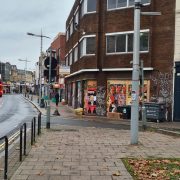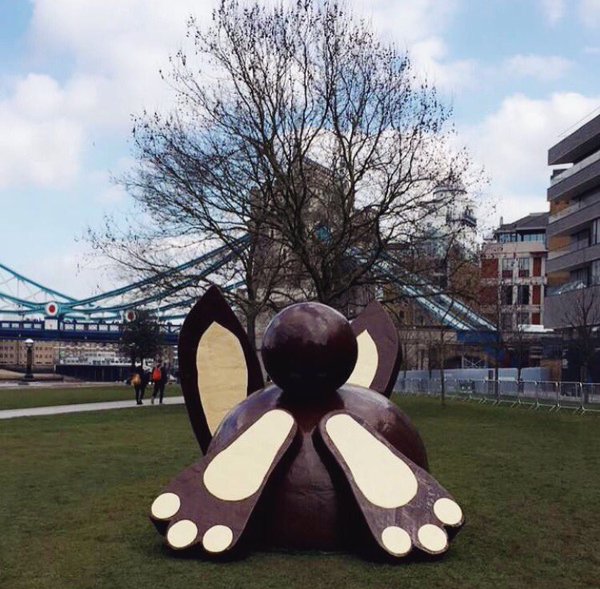
There is growing uncertainty about the fate of the Peckham Peace Wall, in the months leading up to August, when this piece of public art will mark its 10-year anniversary.
The wall is a collage of positive messages written by members of the public after riots wrecked parts of Peckham in 2011. The messages, originally on a board that covered a broken shop window, were turned into a permanent piece of art by Garudio Studiage with funding from Southwark Council. The exhibit was placed in Peckham Square underneath the Peckham Arch.
But now there are concerns that the council may have different plans for public spaces in the borough, especially in light of changing ideas about public art. According to Chris Ratcliffe, co-owner of Garudio Studiage, “Public art is moving more in a direction of not creating monuments or sculptures or tangible things, but creating things where people can talk, be heard and contribute to what’s happening.”
Peckham’s Bussey Building is multi-purpose, with a cafe, art gallery and performance area. It hosts comedy nights and dance performances and is considered an example of inclusive expressive art, which may be more accessible to everyone than tangible art. The building is thought to convey the direction in which progressive art is going within the Southwark area.
There has been no official word of plans, if any, for the Peace Wall. However, residents have noted that the council has been considering several different options for Peckham Square from 2016. Sections of the community have criticised some of the proposed changes, not least revamping the square to remove Peckham Arch, a 1994 structure that was one of the first projects in the area to signal a new push towards regeneration.
The Peace Wall, says Ratcliffe, is also greater than the sum of its parts: “Peckham was portrayed really badly and completely unfairly during the riots. The wall meant something positive came from it and brought all different people together.”
The Peace Wall’s history is well remembered in the area. Students of the Peckham Shed theatre group encouraged residents to use Post-it notes to write what they felt about the riots and to stick them on a board that covered a broken Poundland shop window. Eventually, the broken glass had to be replaced but members of the public did not want to lose the intensely personal record of love and hope. Garudio collaborated with Peckham Shed and Peckham Space Gallery to create a permanent exhibit.

The project brought people who would not normally work together to do so and united a community that had been separated by the tensions provoked by the London riots, which started after the fatal shooting on August 4, 2011 by police of a 29-year-old Tottenham man, Mark Duggan. It was initially alleged that Duggan possessed a gun, but when no weapon was found, peaceful protests began in Tottenham. They later turned violent, spreading across the British capital and later, across the country.
At the time, Peckham was portrayed as wracked by violence, with buses, shops, homes and cars set on fire. But Ratcliffe says this was not true and the Peace Wall reflects the area’s determination to tell the real story. “Lots of residents took part in this project as they were like well, this isn’t what it is actually where we live,” he said.
A decade on, the wall still stands, but Ratcliffe acknowledges that “there’s lots of uncertainty about the wall’s future, as there are some planned redevelopments within that area.”
He adds, “But I don’t really know what the long-term plans are unfortunately.”
Neither, it seems, does anyone else, at least for the moment.



